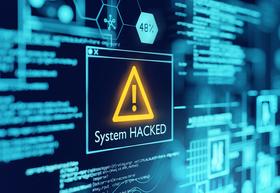Bullying has been part of our human existence since time began. While bullying goes by different names and takes several different forms, whether you call it intimidation or threatening, whether you do it verbally or with your body language, bullying is upsetting and unnerving behavior. Fortunately for us parents, it is completely unacceptable in most private schools, as it should be everywhere else. Most private school discipline codes have strict policies concerning bullying. Be aware that these policies are enforced quickly because students are governed by contract law. In other words, the contract which you signed with the school spells out very clearly the consequences of any infractions of the school's discipline code. Those consequences, such as suspension or expulsion, will happen swiftly.
Naturally, like just about anything else you can think of, bullying has gone electronic. If you thought that bullying was hard to detect in its analog forms, you could imagine how much more difficult electronic or cyberbullying, as it is now called, is to detect. So, where does cyberbullying fit in? As I noted, cyberbullying or bullying done electronically is extremely difficult for us adults to detect. The reason why is that cyberbullying lurks in the virtual shadows created by social media and smartphones. Unless you are following somebody and can monitor their various social media accounts or have access to their mobile device, you cannot definitively prove that cyberbullying is actually occurring. I used the term social media, which used to be relatively simple and confined to MySpace, ICQ, Facebook, and chat rooms - remember them? Social media has multiplied to include Snapchat, Instagram, and Kik. Read 16 Apps and Websites Kids Are Heading to After Facebook to understand how teenagers can fly under the radar to avoid detection. This video clip will give you an overview of the subject from our perspective as parents.
The Forms of Cyberbullying
Sexting
Sexting is the texting of sexually explicit messages or transmitting sexually explicit photos via a smartphone. The problem with all these electronic forms of bullying is that once they are transmitted, they are archived on servers somewhere in cyberspace. Put another way, if you send a nude photograph of yourself to a lover via your smartphone, how do you know that it hasn't been forwarded to somebody else? What if you have a fight with that love, and he decides to take revenge? Well, it's not a pretty picture, is it? Explain this to your children. Tell them how you have written a nasty letter to somebody but put that letter in your desk drawer overnight. Then you reviewed it the next day and decided you shouldn't send it and tore it up. Make your children understand that they must think carefully before clicking the Send icon. This video clip gives an overview of sexting from the parent's perspective. Teen expert Josh Shipp explains sexting in the following brief video.
Teens, particularly girls, seem to be more susceptible to this form of bullying. That's because they take their smartphones and other forms of electronic communication for granted. Many girls feel that sexting makes them more desirable and accepted by their peers. It's the age-old story of children wanting to become adults overnight. We need to discuss those adolescent feelings with our children. They need to know how best to handle those emotions safely and responsibly.
Harassment
Any form of demeaning discussion or talking about another person is a form of harassment. Dissing, as it is commonly called, can be amusing in the hands of a skilled comedian. But when the dissing is done at one of your peers' expense, it is harassment. It's cruel. Making people feel bad if they have done something they shouldn't have done is one thing. Just making them feel bad by putting down their clothes or their appearance is quite another. Posting demeaning comments on social media is an electronic form of harassment.
Threats
Threatening verbiage and behavior is another form of cyberbullying. We all have seen those scenes in movies where somebody is walking down a dark street at night, and suddenly a gang of nasty-looking people appears. The taunting and challenging verbiage is one thing. "I'll get you for that!" When it is said threateningly, it becomes quite another matter.
Threats of physical abuse can paralyze a sensitive young person. Threatening others electronically by telling them about the horrible things you will do or say is part of cyberbullying. It's very difficult to combat.
The Consequences
There have been several well-publicized incidents of cyberbullying. What can private school parents and administrators learn from them? Assume that cyberbullying will take place. Have policies in place to deal with it. Enforce those policies. If you don't deal with cyberbullying offensively, the consequences can be disastrous for your students and for your school and its good reputation.
Private schools are typically very close-knit and supportive communities where nothing escapes notice for long. Unfortunately, day schools are more likely to be subject to cyberbullying than boarding or residential schools. Why? The reason is the school cannot supervise student behavior once its students leave the campus. Sadly, many children are not supervised at home as closely as they are in the school setting.
Every private school needs to make parents aware of the issue. Hold workshops preferably with a visiting expert whose credibility will be above reproach. Make students and parents aware of the serious consequences which will result if students engage in cyberbullying.
The only true weapon against cyberbullying is constant vigilance. That's the same weapon we parents have used forever to deal with all kinds of problems. It works.
Questions? Contact us on Facebook. @privateschoolreview
























